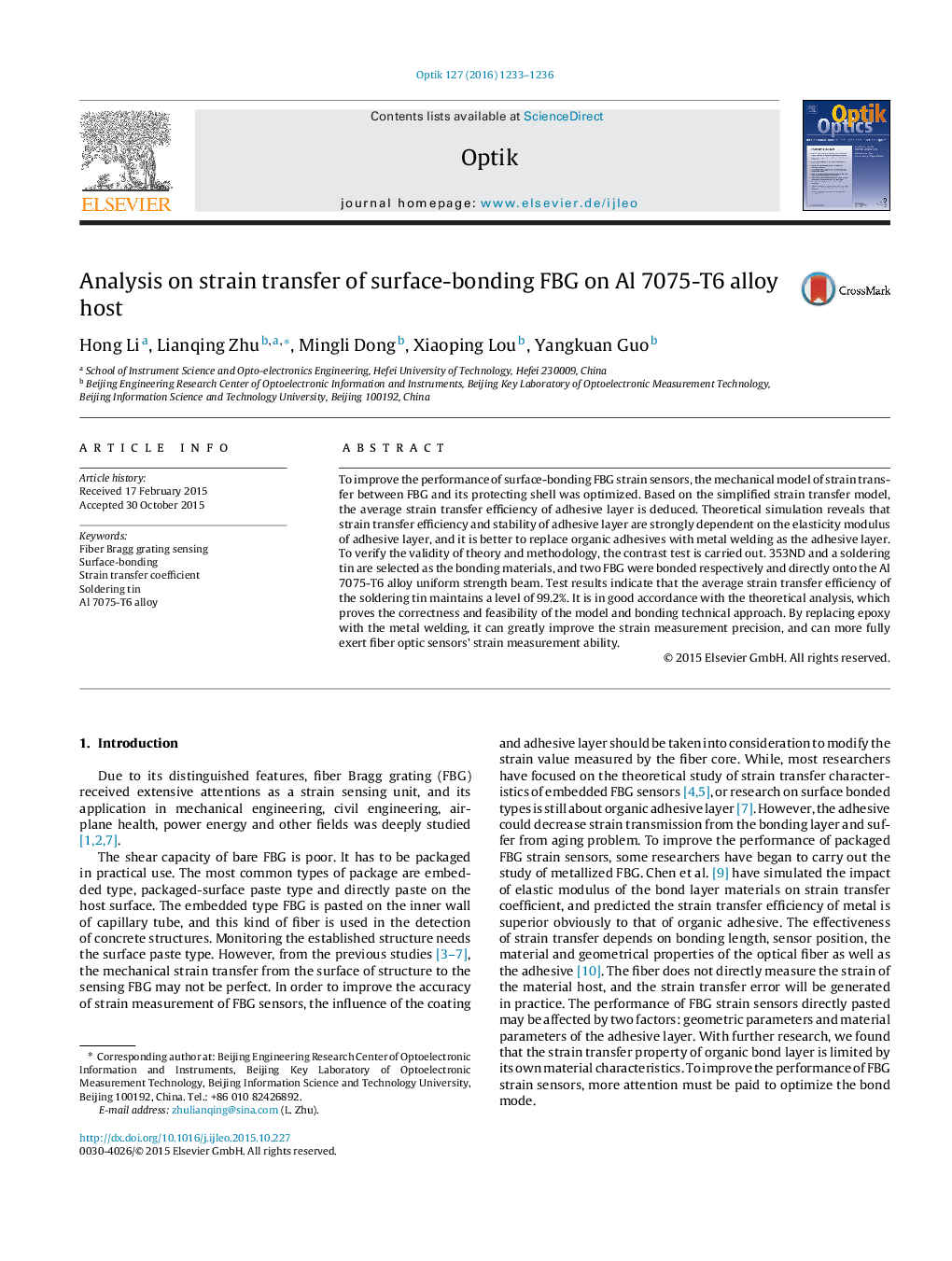| Article ID | Journal | Published Year | Pages | File Type |
|---|---|---|---|---|
| 847828 | Optik - International Journal for Light and Electron Optics | 2016 | 4 Pages |
To improve the performance of surface-bonding FBG strain sensors, the mechanical model of strain transfer between FBG and its protecting shell was optimized. Based on the simplified strain transfer model, the average strain transfer efficiency of adhesive layer is deduced. Theoretical simulation reveals that strain transfer efficiency and stability of adhesive layer are strongly dependent on the elasticity modulus of adhesive layer, and it is better to replace organic adhesives with metal welding as the adhesive layer. To verify the validity of theory and methodology, the contrast test is carried out. 353ND and a soldering tin are selected as the bonding materials, and two FBG were bonded respectively and directly onto the Al 7075-T6 alloy uniform strength beam. Test results indicate that the average strain transfer efficiency of the soldering tin maintains a level of 99.2%. It is in good accordance with the theoretical analysis, which proves the correctness and feasibility of the model and bonding technical approach. By replacing epoxy with the metal welding, it can greatly improve the strain measurement precision, and can more fully exert fiber optic sensors’ strain measurement ability.
